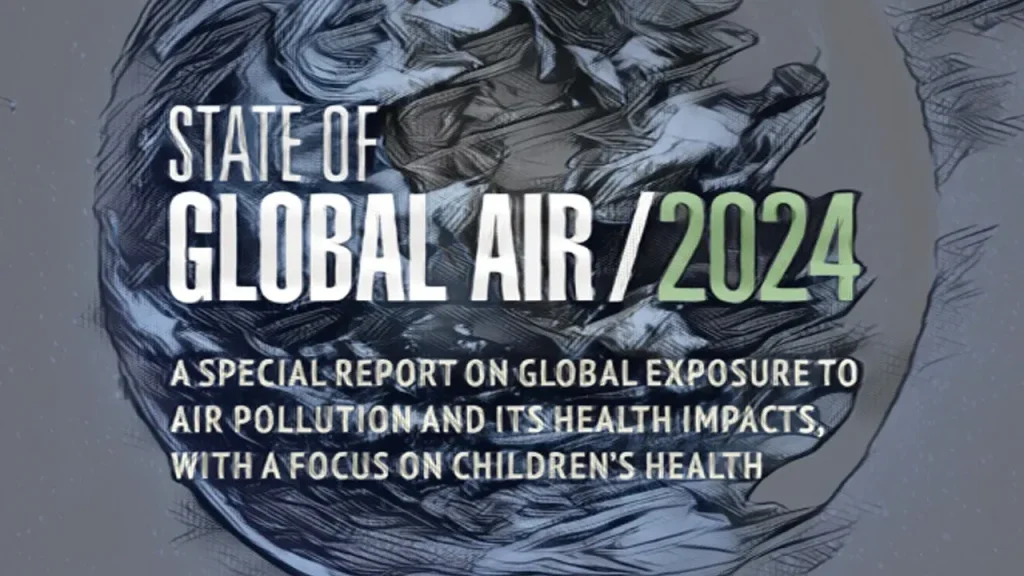Context:
Recently, at the COP-29, the State of Climate Report (2024) released and stressed that 2024 is set to become the warmest year on record due to the presence of the El-Nino.
More on News:
- The State of Climate Report is released by the World Metrological Organisation (WMO).
- The State of the Climate 2024 Report has issued a Red Alert and highlighted the alarming acceleration of climate change within a single generation. This alarming acceleration is driven by the relentless rise of greenhouse gas concentrations in the atmosphere.
Key Highlights of the report:

- Record-Breaking Temperatures: The year 2024 is expected to be the hottest on record, continuing a trend of exceptionally high global temperatures.
From January to September 2024, the global average temperature was 1.54°C above pre-industrial levels which was primarily influenced by an El Nino weather pattern. - Decadal Temperature Increase: The decade from 2015 to 2024 is projected to be the warmest on record. Ocean warming has accelerated significantly over the last 20 years, with ongoing predictions of irreversible heating in the world’s oceans.
- Greenhouse Gas Emissions: In 2023, greenhouse gas emissions reached their highest levels ever recorded and also a continuation of this upward trend in 2024.
From 1750 to 2023, the carbon dioxide levels have increased by 51% which contributes significantly to global warming. - Ocean and Glacier Changes: The oceans reached record heat levels in 2023 and 2024 indicating that this trend will persist.
In 2023, Glaciers worldwide are experiencing faster ice loss marking the highest rate of retreat in 70 years. This is equivalent to losing five times the volume of water in the Dead Sea. - Impact on Sea Levels: Rapid glacial melting, especially in North America and Europe, is contributing to rising sea levels.
From 2014 to 2023, the global average sea level rose at a rate of 4.77 mm per year, more than double the rate seen between 1993 and 2002.
Impact of El Nino (highlighted by the report):

At Global Level
- Rising Global Temperatures: El Nino contributes to higher global temperatures, often triggering heatwaves and extreme weather events.
The weakening/reversal of trade winds reduces the upwelling of cold water, allowing warm water to spread eastward across the Pacific.
This expansion of warm surface waters further increases global temperatures by warming the air over the Pacific and beyond. - Disrupted Weather Patterns: El Nino disrupts global weather patterns, leading to droughts in some areas and heavy rainfall with flooding in others.
- Ocean Warming: El Nino can heat ocean waters, causing coral bleaching and marine heatwaves, which severely impact marine ecosystems.
At Regional Level
- India: Weakens monsoons, increasing the likelihood of heatwaves and drought, reducing rainfall during the monsoon season, and negatively affecting agriculture and water supplies.
- South America (Peru Coast): Reduces fish populations due to changes in ocean currents and diminished nutrient upwelling.
Therefore, these coastal areas often experience heavy rainfall and severe flooding. - Southeast Asia: This leads to decreased rainfall, increasing the risk of drought and wildfires, alongside occasional flooding in specific areas like Indonesia and Malaysia.
- Australia: Heightens the risk of droughts, particularly in eastern and southern regions, resulting in more frequent and intense bushfires.
- North America: Causes heavy rainfall and flooding in California and other western states while intensifying heatwaves in the southwestern United States.
Key recommendations of the report:
- Mitigation of Climate Change: Intensify efforts to keep global warming below 1.5°C by committing to stronger reductions in greenhouse gas emissions.
- Climate Adaptation: Enhance climate adaptation measures through increased investments in resilient infrastructure and integrated water resource management.
- Early Warning Systems: Expand Multi-Hazard Early Warning Systems (MHEWS) worldwide, prioritizing vulnerable areas such as Africa and small island nations.
- Renewable Energy: Aim to triple renewable energy capacity and double energy efficiency by 2030 to achieve climate mitigation goals.
- Strengthen Climate Services: Bolster National Meteorological and Hydrological Services (NMHS) to improve data collection, modelling, and forecasting for better-informed decision-making.
- Cryosphere Protection: Develop policies to reduce glacial loss and promote the sustainable management of polar and high-altitude ecosystems.
About World Metrological Organisation (WMO):
- It is a specialized agency of the United Nations (UN).
- It was founded in 1950 and became the UN’s specialized agency for meteorology (weather and climate), operational hydrology, and related geophysical sciences.
- It traces its origins to the International Meteorological Organization (IMO), established in 1873.
Also Read:
Guidelines for Prevention of Misleading Advertisement in Coaching Sector, 2024

